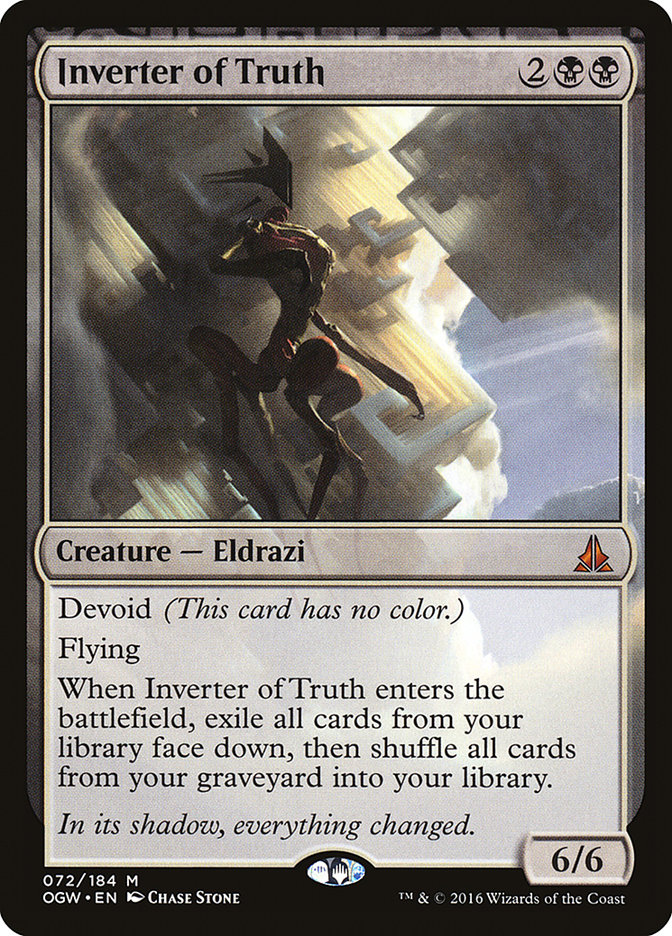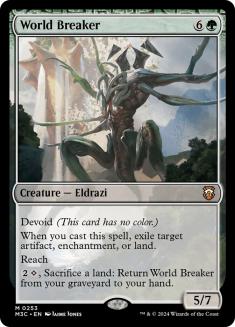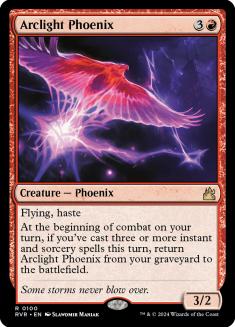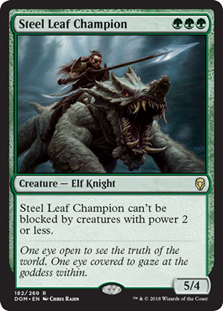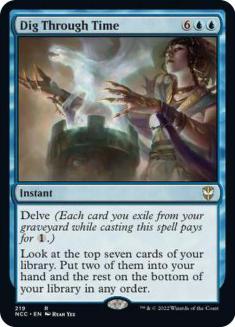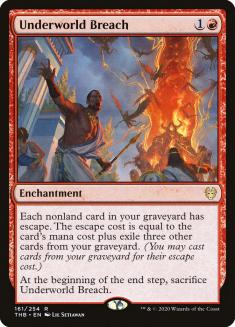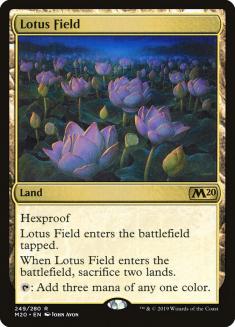It’s been quite a two weeks in Magic with the inaugural round of Players Tour events alongside back to back Team Constructed Opens on the SCG Tour. And more specifically, it’s been an important two weeks for the fledgling Pioneer format. Magic’s newest addition has been quite popular since its introduction last October, but this would be the biggest test of the metagame now that the rate of bans has been slowed and the format allowed to evolve organically over a longer period of time.
I knew going into these last two weekends that the metagame that emerged would not be the same as the one that entered, and it’s safe to say that is indeed the case. Theros Beyond Death has had a huge impact on Pioneer, and the huge spotlight on the format has revealed which previously popular decks were mere pretenders, and which will be around moving forward. The following is where I think the Pioneer metagame stands now and where it will go in the future.
The Top Tier Has Three Decks
Dimir Inverter was the breakout deck in Brussels and Nagoya, and Lotus Breach was the breakout deck in Phoenix. Both performed exceptionally across all three Players Tours, and put players in the Top 8 of nearly every event. Along with them, you have to place Sultai Delirium. Taking home the trophy in Brussels put the deck on the map, but as a new player, its real test would come in Phoenix against a field that would be more prepared.
Despite that target, Sultai Delirium posted a 55% win rate in Phoenix, among the highest for heavily played archetypes. Jacob Wilson piloted the deck to a third-place finish, and it’s clear that the combination of efficient disruption, card selection, and Uro, Titan of Nature’s Wrath can compete against a wide range of strategies. This deck is the real deal.
Creatures (20)
- 1 Scavenging Ooze
- 2 Courser of Kruphix
- 4 Satyr Wayfinder
- 1 Brain Maggot
- 2 Jace, Vryn's Prodigy
- 1 Tireless Tracker
- 1 Emrakul, the Promised End
- 1 Ishkanah, Grafwidow
- 1 Walking Ballista
- 2 Murderous Rider
- 4 Uro, Titan of Nature's Wrath
Planeswalkers (2)
Lands (23)
Spells (15)

The primary advantage that these decks have over the rest of the field is consistency. They all play a ton of card selection, whether it’s Opt and Dig Through Time, Satyr Wayfinder and Traverse the Ulvenwald, or Strategic Planning and Pore Over the Pages. These decks find their key cards nearly every game and are consistently enacting the same gameplan over and over again.
Sultai Delirum pairs this card selection with the best disruption in the format in Thoughtseize and Fatal Push to take a more controlling stance. Lotus Breach has the threat of a combo kill as early as Turn 4, or can simply ramp to Granted for Ugin, the Spirit Dragon. And Dimir Inverter combines a little bit of both, with plenty of disruption and its own combo. But regardless of their chosen route to victory, these decks almost never lose to themselves with anemic draws.
Secondly, all three of these decks are building towards an unbeatable end-game. Dimir Inverter and Lotus Breach have their combo kills and Sultai Delirium has its singleton copy of Emrakul, the Promised End to fetch with Traverse the Ulvenwald. You have to pressure these decks and end the game before their powerful end-game comes online, but without any disruption it’s difficult to actually race them. Then when you try to combine those elements, you start to lose games to your own inconsistency. Anything less than a great draw is going to struggle against these three decks, and that’s why they’re at the top.
Moving forward, I expect the metagame to coalesce around these three, with various decks popping up to attack them. And while Lotus Breach has the most eye-popping numbers, I’d bet on Dimir Inverter and Sultai Delirium being the more popular choices.
We saw this happen in the heyday of Amulet Titan when it had Summer Bloom, and more recently with Ironworks. Everyone recognized the power of these decks, but a ton of players were put off by the skill cap to pilot them properly, since combo decks operate quite differently from other strategies. This dynamic puts an artificial cap on how popular they become, regardless of their perceived strength.
I expect Lotus Breach to be similarly suppressed, while tons of players are attracted to decks with powerful disruption and card advantage, which show up in Dimir Inverter and Sultai Delirium. Playing these decks, particularly Dimir Inverter, is still difficult, but you’re playing a familiar brand of Magic with them, and that’s something a lot of players value. It’s no coincidence that we see specific players show up with combo decks more often than others, like Matt Nass and Caleb Scherer. These players have put in the reps to understand on a fundamental level how combo decks operate, and are more comfortable piloting them than most.
Creatures (14)
Lands (24)
Spells (22)

The interesting thing is that this suppression in numbers makes it harder for the rest of the field to adequately prepare for the Lotus Breach matchup, since they need to worry about more popular decks as well. Given that the deck is also quite resilient, I expect Lotus Breach to continue to be very strong, even with a target on its back.
It Was a Bad Weekend for Aggressive Decks
Mono-Red Aggro, Mono-Black Aggro, and Bant Spirits are the premier aggressive decks in Pioneer. And after a solid weekend in Brussels and Nagoya, all three saw their win rates drop in Phoenix. The combination of disruption and a quick clock is a long-held recipe for success against combo decks, but things didn’t play out that way in Phoenix.
Part of it was a rise in Sultai Delirium. Only Bant Spirits posted a positive win rate against it among these three, and the other two were soundly crushed, albeit in a small sample size. Jumping to a firm conclusion from there can be risky, but on paper Uro, Titan of Nature’s Wrath is outstanding against aggressive decks, and Sultai Delirium is great at escaping Uro on Turn 4.
Bant Spirits is better here precisely because it’s better-equipped to handle Uro with Spell Queller, Nebelgast Herald, and Mystical Dispute out of the sideboard. Mono-Black Aggro can bring in Leyline of the Void but that’s not nearly as reliable, and Mono-Red Aggro has to rely on very weak graveyard hate like Tormod’s Crypt or Grafdigger’s Cage.
The other issue that aggro decks faced was a response from Dimir Inverter. The combo is so lean that they can afford to sideboard in more cards than a typical combo deck, and with all their card selection they will find those high-impact cards. Look at Corey Burkhart’s winning list:
Creatures (8)
Planeswalkers (3)
Lands (25)
Spells (24)

He has five different singleton haymakers for aggressive decks, from Kalitas, Traitor of Ghet to Witch’s Vengeance. I was Witch’s Vengeanced four times last weekend playing Bant Spirits – it was not a fun time. The aggro decks don’t get the same level of help from their sideboards, and after a good first weekend, the metagame adjusted. And there’s only so much aggressive decks can do to pivot once they’re being targeted. They just aren’t as malleable as midrange and control strategies.
That means the aggro decks are only going to be good choices when the top tier isn’t prepared for them. That said, if you’re dead set on attacking, I think Bant Spirits is the best of the three. The fact that it gets to disrupt the opponent while putting bodies on the battlefield and building its clock is critical to closing games against the top decks before they grind through your disruption and assemble their powerful synergies.
Creatures (32)
- 4 Rattlechains
- 4 Spell Queller
- 4 Selfless Spirit
- 4 Mausoleum Wanderer
- 4 Nebelgast Herald
- 4 Supreme Phantom
- 4 Empyrean Eagle
- 4 Spectral Sailor
Lands (24)
Spells (4)

But even Bant Spirits worries me for two reasons. First, it has the worst manabase and very little control over its draws, so it loses more games to itself than any other top deck in Pioneer. Second, if the metagame does coalesce around the top three decks, Mystical Dispute becomes a viable maindeck card, which we saw in small numbers in Phoenix, like in Huey Jensen’s second-place Lotus Breach list. Mystical Dispute is already among the most played cards in Pioneer, and among the best against Bant Spirits specifically, since its trying to gain a tempo advantage with a tight curve of mostly blue creatures.
Thoughtseize and Fatal Push Define the Format
Legacy is defined by Force of Will and Brainstorm. Modern is defined by myriad linear strategies. And now we know that Pioneer is defined by this pair of disruption spells. Thoughtseize and Fatal Push are on a tier of their own, and at this point it’s clear that you shouldn’t be playing without them unless you plan on winning very quickly.
Combating these cards should be your top priority. They’re flexible enough that doing so is difficult, but not impossible. Fatal Push in particular is not nearly as easy to cast with revolt as it is in Modern, and you should be looking to exploit that by playing high-impact three- and four-mana creatures. Spell Queller is the leading example here, and one of the reasons Bant Spirits has performed well. I also like playing Goblin Rabblemaster in red decks, which can take over a game even if your opponent disrupts your first two plays.
The prevalence of Thoughtseize means you’re going to be drained of resources early and want to build your decks to provide as many high-impact topdecks as possible. The shift from Azorius Spirits to Bant Spirits reflects the need for a card like Collected Company which can change the tide of a game.
If you’re the kind of player who likes to be answering threats rather than casting them, then there’s nothing more to say beyond “Put Thoughtseize and Fatal Push into your deck for as long as you can.”
The Honeymoon Phase Is Over
Part of the charm of Pioneer has been the ability for players to look back over decks they loved in the past and bring them new life. So despite the frequent bans of overpowered cards, the early Pioneer metagame has been rather open, with lots of fringe strategies and pet decks around. As long as these decks had some powerful cards and/or synergies, they could compete reasonably well against an early, untuned metagame.
But at this point we know which decks are real and which aren’t. You can’t get away with playing things like Mono-Green Ramp, Izzet Phoenix, or Golgari Aggro anymore if you are aiming to win tournaments. They just aren’t good enough to compete right now.
The good news is that even in a much narrower field, there’s a good variety of decks and strategies. The aggro decks need to be re-tuned but they still have potential if you find the right list. Bant Spirits is a solid choice if you like tempo, and the format’s top tier contains a straight combo deck, a combo-control deck, and an archetypal midrange deck. There’s enough here to satisfy most players, so there’s no reason to continue playing underpowered decks until they get some new tools that will elevate them to compete with the rest of the metagame.
Does Pioneer Need a Ban?
Anytime a powerful combo deck emerges, ban talk is sure to follow. In this case we have two powerful combos, and cards like Dig Through Time, Underworld Breach, and Lotus Field are receiving scrutiny for potentially being too powerful.
I don’t want to speculate on whether a card will be banned or not, and at this point the community is getting a bit too ban-happy for my liking. It’s been two weekends, and while Lotus Breach posted some great numbers in Phoenix, it’s important to let the metagame try to adjust. It’s always better to have a larger card pool than not. In fact, Pioneer began with that idea in mind with the trial phase where only fetchlands were banned.
Go out and try to beat Lotus Breach and Dimir Inverter, and if it turns out we can’t do it, or if doing so requires a massive contortion by the rest of the metagame, then we can talk about a ban.
Without a solid sample of high-level tournaments, the existing Pioneer metagame has up until now felt like a mirage. Big Red and Five-Color Niv-Mizzet were the most successful decks in January, and both fell off quickly when more robust strategies were found. After these last two weekends, we can be confident that this will be what Pioneer will look like, at least until Ikoria: Lair of Behemoths shakes things up again.



